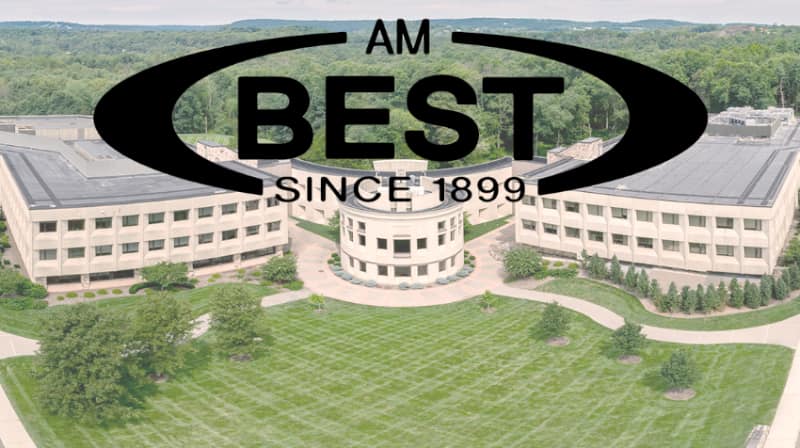Established reinsurance capital supportive, new capital still cautious: AM Best

Rating agency AM Best is maintaining its stable outlook for the global reinsurance industry, but noted that new capital remains cautious on the sector despite a growing need for more of it to flow in.
Raising capital is still challenging in the current economic environment, AM Best says, although some established franchises are having more success here.
The start-ups that have been discusses are all taking things relatively slowly, Artemis understands, with most targeting launches later in 2024, or even for 2025.
But still, AM Best notes that established reinsurance capital remains supportive and hasn’t been fleeing the space, it’s just difficult to raise fresh capital still.
“Some of those that remain in the reinsurance market have looked to fill the gap created by those that have exited the market. However, raising capital in the current economic environment has proven difficult for some,” AM Best explained.
Adding that, “Established, high-quality, and diversified organizations have been able to raise capital to support expansion efforts through the hard cycle.”
Going on to say that, “New entrants, despite varying business plans and strong management teams supporting them, have had more difficulty obtaining funding. Although new entrants could eventually obtain funding, they are unlikely to obtain enough to move the market in a meaningful way.”
Capital is also moving around the reinsurance sector, meaning some areas have felt the pressure of capital constraints more than others.
Some reinsurance firms have elected to divert capital away from property reinsurance, AM Best points out, deploying it into primary or specialty reinsurance lines of business instead.
This has effectively reduced the total deployable capital for reinsurance in general, but in particular for property and catastrophe reinsurance, it seems.
At the same time, some reinsurers are leaning more on third-party investors to support their underwriting and AM Best highlighted that, “Reinsurers continue to partner with third-party capital providers to optimize risk limits on their balance sheet.”
This redeployment of capital away from property reinsurance has also been a key driver for the success of the catastrophe bond market, as re/insurers have been able to tap into the capital markets appetite for higher-attaching layers of global property catastrophe risk this year.
All of which has also driven the rising insurability challenge, especially for US catastrophe exposed property risks, which has led to a situation where, “Insurers see themselves challenged between prudent risk management and the desire to retain market share,” AM Best said.
The rating agency also added, “Government- and state-sponsored entities/programs providing coverage of last resort, as well as price regulation, have created perverse incentives, counteracting the market risk signals that should have prevented continued property development on flood plains and other adverse terrains.”
Overall, the function of reinsurance has been re-defined, AM Best believes.
“Reinsurance was originally created with one goal in mind: capital preservation. Over time, that goal has shifted, as new players entered and exited and business strategies evolved,” AM Best said.
During the soft market period, reinsurance became a tool for managing earnings volatility, the rating agency went on to explain.
AM Best goes on to say that, “Nowadays, reinsurance is again being viewed as a capital preservation product, but some might question if reinsurance could once again be used for earnings management. There remains demand for it, and innovators look to create products where demand exists.”
We’ve covered these emergent reinsurance protection gaps a number of times recently.
AM Best added, “However, (re)insurers have created issues in the past and, more recently, by providing insurance for sub-optimal exposures. Whether the market eventually sees lower level/aggregate covers again remains to be seen, as it may take a few years before the market is comfortable enough to even consider these options.”
With many reinsurers having moved to “retract significant amounts of capacity in the property reinsurance market” and others implementing “drastically higher attachment points and higher risk-adjusted rates on line,” the reinsurance market profitability outlook remains greatly improved.
There is an open question as to whether the recent redefinition of the reinsurance market has gone too far.
For many markets it hasn’t and the new status-quo of reinsurance as capital protection suits many capital providers far better.
But not everyone and it does seem likely we will see a push back into providing some more capacity to lower-layers of reinsurance towers, as well as to frequency covers, albeit in a far more managed and sensible manner.
There is capital with this appetite but it is also waiting patiently, to see if the industry can create innovative solutions to emergent reinsurance protection gaps, to help re/insurers in delivering more capacity to support policyholders.
AM Best concludes, “The current global reinsurance market has been referred to as a “generational” opportunity for reinsurers. Pricing trends and restrictions in terms and conditions are at all-time highs. However, uncertainty continues to mount. Aside from the convergence of social inflation, climate change, and lack of insurability, reinsurers need to adapt to a high inflationary environment, something many of their actuaries and underwriters have never experienced. Uncertainty surrounding the market’s ability to quickly adapt to these new market dynamics and capitalize on pricing remains elevated as well.”






